Balkinization
an unanticipated consequence of
Jack M. Balkin
Balkinization Symposiums: A Continuing List
E-mail:
Jack Balkin:
jackbalkin at yahoo.com
Bruce Ackerman
bruce.ackerman at yale.edu
Ian Ayres
ian.ayres at yale.edu
Corey Brettschneider
corey_brettschneider at brown.edu
Mary Dudziak
mary.l.dudziak at emory.edu
Joey Fishkin
joey.fishkin at gmail.com
Heather Gerken heather.gerken at yale.edu
Abbe Gluck abbe.gluck at yale.edu
Mark Graber
mgraber at law.umaryland.edu
Stephen Griffin
sgriffin at tulane.edu
Jonathan Hafetz
jonathan.hafetz at shu.edu
Jeremy Kessler
jkessler at law.columbia.edu
Andrew Koppelman
akoppelman at law.northwestern.edu
Marty Lederman
msl46 at law.georgetown.edu
Sanford Levinson
slevinson at law.utexas.edu
David Luban
david.luban at gmail.com
Gerard Magliocca
gmaglioc at iupui.edu
Jason Mazzone
mazzonej at illinois.edu
Linda McClain
lmcclain at bu.edu
John Mikhail
mikhail at law.georgetown.edu
Frank Pasquale
pasquale.frank at gmail.com
Nate Persily
npersily at gmail.com
Michael Stokes Paulsen
michaelstokespaulsen at gmail.com
Deborah Pearlstein
dpearlst at yu.edu
Rick Pildes
rick.pildes at nyu.edu
David Pozen
dpozen at law.columbia.edu
Richard Primus
raprimus at umich.edu
K. Sabeel Rahmansabeel.rahman at brooklaw.edu
Alice Ristroph
alice.ristroph at shu.edu
Neil Siegel
siegel at law.duke.edu
David Super
david.super at law.georgetown.edu
Brian Tamanaha
btamanaha at wulaw.wustl.edu
Nelson Tebbe
nelson.tebbe at brooklaw.edu
Mark Tushnet
mtushnet at law.harvard.edu
Adam Winkler
winkler at ucla.edu
Compendium of posts on Hobby Lobby and related cases
The Anti-Torture Memos: Balkinization Posts on Torture, Interrogation, Detention, War Powers, and OLC
The Anti-Torture Memos (arranged by topic)
Recent Posts
A Tale of Two Cities: Mary Anne Franks’s The Cult of the Constitution
Just A Few Blogs
ACS Blog
Alas, a Blog
Althouse
Arts and Letters Daily
Atrios (Eschaton)
Bill of Health
Buzzflash.com
Buzz Machine
Cato at Liberty
Juan Cole (Informed Comment)
Concurring Opinions
The Constitution in 2020
Corrente
Crooked Timber
Daily Howler
Daily Kos
Dana Boyd
Brad DeLong
Digby (Hullabaloo)
Discriminations
Daniel Drezner
Kevin Drum (Mother Jones)
Electrolite
En Banc
Eunomia (Daniel Larison)
Fafblog
Michael Froomkin (Discourse.net)
GovLab (Beth Noveck)
Rick Hasen (Election Law)
History News Network
How Appealing
Ignatz (Sam Heldman)
The Importance of (Ernie Miller)
Infolaw
Instapundit
International Economic Law and Policy Blog
IntLawGrrls
Jacob Levy
Jesus' General
Jurisdynamics
The Kitchen Cabinet
Mark Kleiman
Law Blog Central
Larry Lessig
Lawyers, Guns and Money
Liberal Oasis
Brian Leiter's Law School Reports
The Leiter Reports
Marginal Revolution
Megan McArdle
Memeorandum
Metafilter
Mirror of Justice
The New Republic
Newseum
No More Mister Nice Blog
Brendan Nyhan
Opinio Juris
Orcinus
The Originalism Blog
Pandagon
Passport (Foreign Policy)
Overcoming Bias
Political Animal (Washington Monthly)
Political Theory Daily Review
Political Wire (Taegan Goddard)
The Poor Man
Virginia Postrel
Prawfsblawg
Public Reason
Jonathan Rauch
Raw Story
Redstate
ReligiousLeftLaw.com
Reporters Committee For Freedom of the Press
Reproductive Rights Blog
Rothman's Roadmap to the Right of Publicity
SCOTUS Blog
Seeing the Forest
Clay Shirky
The Shifted Librarian
The Situationist
Larry Solum (Legal Theory)
Andrew Sullivan
Talking Points Memo
Talk Left
Tapped
Tbogg
TechPresident
The Paper Chase (Jurist)
Tom Paine
Tom Tomorrow (This Modern World)
Eve Tushnet
Uggabugga
University of Chicago Law School Faculty Blog
Unqualified Offerings
The Volokh Conspiracy
War and Piece (Laura Rozen)
Wampum
Oliver Willis
Wonkette
Written Description
Matthew Yglesias
Yin
Your Choice of Feeds
1. XML
powered by
2. Atom Feed
3. RSS 2.0
Monday, October 14, 2019
A Tale of Two Cities: Mary Anne Franks’s The Cult of the Constitution
Guest Blogger
For the Symposium on Mary Anne Franks, The Cult of the Constitution (Stanford University Press, 2019).
Leslie Kendrick
Mary Anne Franks’s The Cult of the Constitution opens
on August 11-12, 2017, in Charlottesville, Virginia, where I live with my
family. Franks’s project is to expose the harms caused by our society’s dual commitments
to the First and Second Amendments, and little illustrates those harms so well
as the two days when hundreds of white supremacists from at
least 39 states converged on Charlottesville, where various of them surrounded
and threw lit torches at student counterprotesters, fired
a gun into a crowd, beat
a beloved local elementary school aide in a parking garage, injured
dozens of people, and murdered
Heather Heyer.
Guns and speech are not the main story of August 11-12, 2017.
That story begins and ends with white supremacy, and focus on other elements
must not detract from that. Nevertheless, guns and free speech played important
roles. Guns were everywhere on August 12, and their
relationship to First Amendment activity was everywhere in commentary after
the fact. The white supremacist violence recalled that of the Ku Klux Klan of a
century ago, now overlaid with 21st century paramilitary weaponry. Groups
carrying assault rifles and wearing militia gear were virtually indistinguishable
from the National Guard. In the immediate aftermath, Gov. Terry McAuliffe said
the white supremacists “had better equipment than our State Police had.”
Meanwhile, free speech jurisprudence that has been fairly
stable for a half century cannot by itself explain why hundreds of Americans in
2017 would march under Confederate and Nazi symbols chanting white supremacist
slogans. Yet our free speech practices facilitated this. Most materially, in
the days before the event, the City of Charlottesville attempted to shift the
rally out of the crowded downtown area to a larger park, but the move was blocked
by a federal judge after the rally organizer brought suit with representation
from the Virginia ACLU. (After the mass violence of August 12, that
representation decision became a matter of national reckoning and ultimately
policy change by the ACLU: by August 18, the executive director had announced
that the ACLU would no longer represent speakers seeking to demonstrate with loaded
weapons.) Our free speech law is not the only cause of what happened in
Charlottesville, but it is one.
Speaking of the role of guns and speech in August 11-12,
Franks concludes, “Charlottesville is who we are.” She goes on to observe,
however, that it is “not all we are.” To illustrate this, she turns to what is,
to me, another Charlottesville story. She turns to Khizr Khan, the
Muslim-American lawyer and Gold Star father—and Charlottesville resident—who
spoke at the 2016 Democratic convention. Mr. Khan and his wife Ghazala lost
their son, Captain
Humayun Khan, a 27-year old University of Virginia graduate who dreamed of
becoming a military lawyer, when he was killed by an IED during Operation Iraqi
Freedom. At the convention, addressing the man who would eventually become president,
Mr. Khan said,
“Let me ask you: Have you even read the U.S. Constitution? I will gladly lend
you my copy. In this document, look for the words ‘liberty’ and ‘equal protection
of law.’” For Franks, Khan’s stance and his words represent our societal commitment
to equality.
Franks argues that our commitments to guns and free speech
are in grave tension with our commitment to equality. Through three chapters
that make up the heart of the book, Franks argues that that robust
implementation of the First and Second Amendment causes harm—and not evenly
distributed harm, but harm that falls disproportionately on the marginalized.
In the context of guns, harms fall on women and nonwhite men who are victims of
gun violence while not being treated as beneficiaries of Second Amendment
protections. (Franks at 89). In the context of speech, “the primary targets of
silencing speech—harassment, threats, genocidal rhetoric, hate speech, revenge
porn—are women, nonwhite men, and sexual minorities.” (Franks at 116). Franks
focuses particularly on advocacy groups such as the NRA and the ACLU and argues
that such groups advocate for First and Second Amendment rights in more robust
terms than either right actually warrants. The result is an implementation of
liberty that undermines equality.
Franks advocates an “honest constitutional accounting” and a
constitutional culture that focuses on “those who have suffered the most severe
constitutional deprivations” (203). How does this look? “It looks like the
rejection of selective fidelity to constitutional rights. It looks like denying
attention to those who claim to honor the right to bear arms but look the other
way when black men are shot dead for exercising them. It looks like demanding
that those who defend the right of free speech respond to the silencing of
women” (203-4).
Franks provides vital attention to the disparate impact of
our First and Second Amendment commitments on marginalized groups. As I’ve said
in another context, free speech is not free, and we do not split the check
evenly. The costs of our commitments should not be minimized or sanitized, and
Franks does necessary work in exposing them.
I am curious for more details on Franks’s constitutional
accounting. There are various
ongoing
conversations
about the relationship between the First Amendment and equality, and more from
Franks would enrich this picture. Franks brings to her endeavor a powerful
combination of clear-eyed realism and unflagging advocacy for something better.
These skills, I would argue, contributed to the drafting of the
first model criminal statute on revenge porn and its adoption by multiple
states. Given her extensive experience with legal reform, what particular changes
would she advocate and prioritize? And how much should be driven by pragmatics
and concerns about governmental abuse? Concerns about the likely tendencies of democratic
majorities are a large part of why we have the speech jurisprudence we do,
including, for instance, Justice Thurgood Marshall arguing
that government neutrality toward ideas is an outgrowth of the Equal Protection
Clause. These questions do not admit of easy answers, but any answer of Franks
would be incisive and thought provoking.
I am also curious about Franks’s view of Fred Schauer’s argument
in Uncoupling Free Speech that we are wrong to conclude that “because a
price must be paid for free speech, it must be the victims of harmful speech
who are to pay it” (Schauer, Uncoupling Free Speech, 92 Columbia L. Rev. 1321,
1322 (1992).) Schauer urged more consideration of the uneven distribution of
the harms of free speech, and he proposed a thought experiment. What if,
instead of telling defamation victims they are out of luck, we compensated them
from a victims’ fund, collected from the public? The media would not bear a
cost that might chill protected speech, and the victims would receive compensation
for their injury. Schauer raised the possibility of the same approach for other
speech-related harms, including those caused by hate speech and pornography. I
am interested in what Franks would say.
My questions here have mostly been about what steps Franks
recommends in response to the problems she sees. The fact remains, however,
that simply by discussing the costs of our constitutional commitments, she is furthering
vital conversation.
Because know it or not, like Mr. Khan and me, we are all
living in Charlottesville.
Posted
9:30 AM
by Guest Blogger [link]
Books by Balkinization Bloggers

Linda C. McClain and Aziza Ahmed, The Routledge Companion to Gender and COVID-19 (Routledge, 2024)

David Pozen, The Constitution of the War on Drugs (Oxford University Press, 2024)

Jack M. Balkin, Memory and Authority: The Uses of History in Constitutional Interpretation (Yale University Press, 2024)
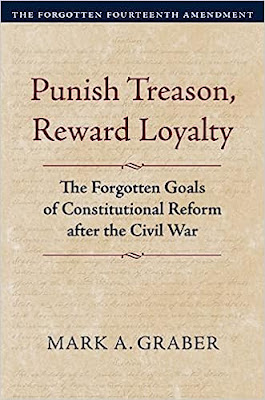
Mark A. Graber, Punish Treason, Reward Loyalty: The Forgotten Goals of Constitutional Reform after the Civil War (University of Kansas Press, 2023)
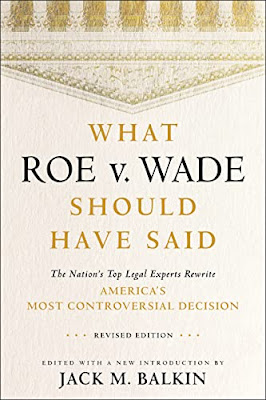
Jack M. Balkin, What Roe v. Wade Should Have Said: The Nation's Top Legal Experts Rewrite America's Most Controversial Decision - Revised Edition (NYU Press, 2023)

Andrew Koppelman, Burning Down the House: How Libertarian Philosophy Was Corrupted by Delusion and Greed (St. Martin’s Press, 2022)

Gerard N. Magliocca, Washington's Heir: The Life of Justice Bushrod Washington (Oxford University Press, 2022)
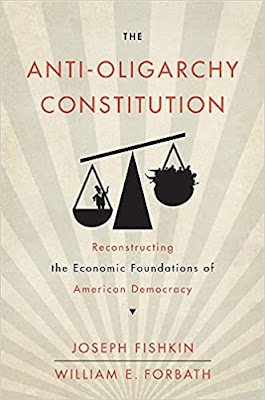
Joseph Fishkin and William E. Forbath, The Anti-Oligarchy Constitution: Reconstructing the Economic Foundations of American Democracy (Harvard University Press, 2022)
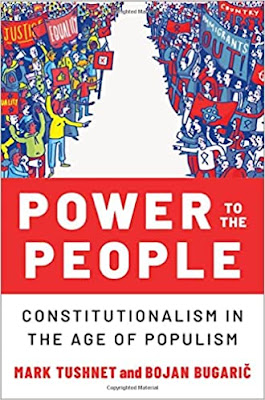
Mark Tushnet and Bojan Bugaric, Power to the People: Constitutionalism in the Age of Populism (Oxford University Press 2021).

Mark Philip Bradley and Mary L. Dudziak, eds., Making the Forever War: Marilyn B. Young on the Culture and Politics of American Militarism Culture and Politics in the Cold War and Beyond (University of Massachusetts Press, 2021).

Jack M. Balkin, What Obergefell v. Hodges Should Have Said: The Nation's Top Legal Experts Rewrite America's Same-Sex Marriage Decision (Yale University Press, 2020)

Frank Pasquale, New Laws of Robotics: Defending Human Expertise in the Age of AI (Belknap Press, 2020)

Jack M. Balkin, The Cycles of Constitutional Time (Oxford University Press, 2020)

Mark Tushnet, Taking Back the Constitution: Activist Judges and the Next Age of American Law (Yale University Press 2020).

Andrew Koppelman, Gay Rights vs. Religious Liberty?: The Unnecessary Conflict (Oxford University Press, 2020)

Ezekiel J Emanuel and Abbe R. Gluck, The Trillion Dollar Revolution: How the Affordable Care Act Transformed Politics, Law, and Health Care in America (PublicAffairs, 2020)

Linda C. McClain, Who's the Bigot?: Learning from Conflicts over Marriage and Civil Rights Law (Oxford University Press, 2020)
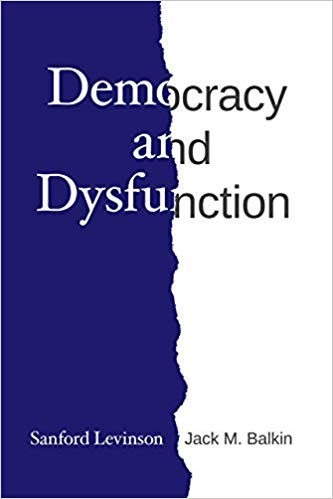
Sanford Levinson and Jack M. Balkin, Democracy and Dysfunction (University of Chicago Press, 2019)

Sanford Levinson, Written in Stone: Public Monuments in Changing Societies (Duke University Press 2018)

Mark A. Graber, Sanford Levinson, and Mark Tushnet, eds., Constitutional Democracy in Crisis? (Oxford University Press 2018)

Gerard Magliocca, The Heart of the Constitution: How the Bill of Rights became the Bill of Rights (Oxford University Press, 2018)

Cynthia Levinson and Sanford Levinson, Fault Lines in the Constitution: The Framers, Their Fights, and the Flaws that Affect Us Today (Peachtree Publishers, 2017)

Brian Z. Tamanaha, A Realistic Theory of Law (Cambridge University Press 2017)

Sanford Levinson, Nullification and Secession in Modern Constitutional Thought (University Press of Kansas 2016)

Sanford Levinson, An Argument Open to All: Reading The Federalist in the 21st Century (Yale University Press 2015)

Stephen M. Griffin, Broken Trust: Dysfunctional Government and Constitutional Reform (University Press of Kansas, 2015)

Frank Pasquale, The Black Box Society: The Secret Algorithms That Control Money and Information (Harvard University Press, 2015)

Bruce Ackerman, We the People, Volume 3: The Civil Rights Revolution (Harvard University Press, 2014)
Balkinization Symposium on We the People, Volume 3: The Civil Rights Revolution

Joseph Fishkin, Bottlenecks: A New Theory of Equal Opportunity (Oxford University Press, 2014)

Mark A. Graber, A New Introduction to American Constitutionalism (Oxford University Press, 2013)

John Mikhail, Elements of Moral Cognition: Rawls' Linguistic Analogy and the Cognitive Science of Moral and Legal Judgment (Cambridge University Press, 2013)

Gerard N. Magliocca, American Founding Son: John Bingham and the Invention of the Fourteenth Amendment (New York University Press, 2013)

Stephen M. Griffin, Long Wars and the Constitution (Harvard University Press, 2013)

Andrew Koppelman, The Tough Luck Constitution and the Assault on Health Care Reform (Oxford University Press, 2013)

James E. Fleming and Linda C. McClain, Ordered Liberty: Rights, Responsibilities, and Virtues (Harvard University Press, 2013)
Balkinization Symposium on Ordered Liberty: Rights, Responsibilities, and Virtues

Andrew Koppelman, Defending American Religious Neutrality (Harvard University Press, 2013)

Brian Z. Tamanaha, Failing Law Schools (University of Chicago Press, 2012)

Sanford Levinson, Framed: America's 51 Constitutions and the Crisis of Governance (Oxford University Press, 2012)

Linda C. McClain and Joanna L. Grossman, Gender Equality: Dimensions of Women's Equal Citizenship (Cambridge University Press, 2012)

Mary Dudziak, War Time: An Idea, Its History, Its Consequences (Oxford University Press, 2012)

Jack M. Balkin, Living Originalism (Harvard University Press, 2011)

Jason Mazzone, Copyfraud and Other Abuses of Intellectual Property Law (Stanford University Press, 2011)

Richard W. Garnett and Andrew Koppelman, First Amendment Stories, (Foundation Press 2011)

Jack M. Balkin, Constitutional Redemption: Political Faith in an Unjust World (Harvard University Press, 2011)

Gerard Magliocca, The Tragedy of William Jennings Bryan: Constitutional Law and the Politics of Backlash (Yale University Press, 2011)

Bernard Harcourt, The Illusion of Free Markets: Punishment and the Myth of Natural Order (Harvard University Press, 2010)

Bruce Ackerman, The Decline and Fall of the American Republic (Harvard University Press, 2010)
Balkinization Symposium on The Decline and Fall of the American Republic

Ian Ayres. Carrots and Sticks: Unlock the Power of Incentives to Get Things Done (Bantam Books, 2010)

Mark Tushnet, Why the Constitution Matters (Yale University Press 2010)
Ian Ayres and Barry Nalebuff: Lifecycle Investing: A New, Safe, and Audacious Way to Improve the Performance of Your Retirement Portfolio (Basic Books, 2010)
.jpg)
Jack M. Balkin, The Laws of Change: I Ching and the Philosophy of Life (2d Edition, Sybil Creek Press 2009)

Brian Z. Tamanaha, Beyond the Formalist-Realist Divide: The Role of Politics in Judging (Princeton University Press 2009)
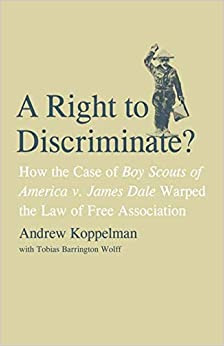
Andrew Koppelman and Tobias Barrington Wolff, A Right to Discriminate?: How the Case of Boy Scouts of America v. James Dale Warped the Law of Free Association (Yale University Press 2009)

Jack M. Balkin and Reva B. Siegel, The Constitution in 2020 (Oxford University Press 2009)
Heather K. Gerken, The Democracy Index: Why Our Election System Is Failing and How to Fix It (Princeton University Press 2009)

Mary Dudziak, Exporting American Dreams: Thurgood Marshall's African Journey (Oxford University Press 2008)

David Luban, Legal Ethics and Human Dignity (Cambridge Univ. Press 2007)

Ian Ayres, Super Crunchers: Why Thinking-By-Numbers is the New Way to be Smart (Bantam 2007)

Jack M. Balkin, James Grimmelmann, Eddan Katz, Nimrod Kozlovski, Shlomit Wagman and Tal Zarsky, eds., Cybercrime: Digital Cops in a Networked Environment (N.Y.U. Press 2007)
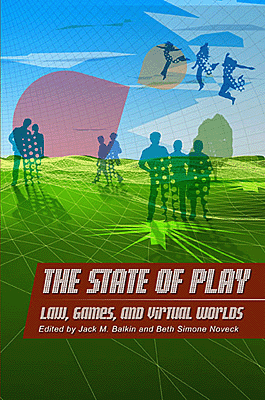
Jack M. Balkin and Beth Simone Noveck, The State of Play: Law, Games, and Virtual Worlds (N.Y.U. Press 2006)

Andrew Koppelman, Same Sex, Different States: When Same-Sex Marriages Cross State Lines (Yale University Press 2006)
Brian Tamanaha, Law as a Means to an End (Cambridge University Press 2006)
Sanford Levinson, Our Undemocratic Constitution (Oxford University Press 2006)
Mark Graber, Dred Scott and the Problem of Constitutional Evil (Cambridge University Press 2006)
Jack M. Balkin, ed., What Roe v. Wade Should Have Said (N.Y.U. Press 2005)
Sanford Levinson, ed., Torture: A Collection (Oxford University Press 2004)
Balkin.com homepage
Bibliography
Conlaw.net
Cultural Software
Writings
Opeds
The Information Society Project
BrownvBoard.com
Useful Links
Syllabi and Exams